Unseen photo of JFK assassination found hidden in Texas thift store
Bevan Hurley
Wed, 22 February 2023
A previously unpublished photograph of John F Kennedy’s motorcade snapped minutes before his assassination in Dallas in 1963 has been unearthed in a Texas second hand store.
George Rebeles made the extraordinary discovery inside a used Bachman Turner Overdrive compact disc case that he bought at the Souls Harbor Thrift Store in the city of Ferris, according to local news site WFAA.
Mr Rebeles told WFAA he opened the case about a month after making the purchase, and was stunned to see the black and white Polaroid photo with the date of 11-22-63 handwritten on the back.
“How this could have ended up in a small town thrift store, fascinates me,” Mr Rebeles told the ABC affiliate.
JFK historian Farris Rookstool told WFAA that the photo appeared to have been taken as the presidential motorcade left Love Field Airport.
According to the JFK Library, the president and wife Jackie Kennedy Onassis arrived at Love Field at 11.38am after taking a short flight from Fort Worth on the morning of 22 November 1963.

A photo taken on the day of John F Kennedy’s assassination in Dallas in 1963 has been unearthed in a Texas thrift store (WFAA)
The president’s limousine left the airport for the 10 mile ride into downtown Dallas, where he was shot at Dealey Plaza at around 12.30pm. The Warren Commission would later rule that Lee Harvey Oswald was solely responsible for JFK’s murder.
However, questions and conspiracies have continued to swirl around the assassination, and investigators continue to push for the government to release all of its classified files.
The National Archives and Records Administration released more than 13,000 documents about the assassination in December,
Mr Rookstool told the news site that the photo would make a nice family heirloom, but was unlikely to be very valuable.

President Kennedy’s motorcade travelling through Dallas on 22 November 1963
Its new owner said he was yet to decide if he would try to sell the photograph, and that he was more interested in figuring out how it would up in a thrift store in Ferris.
Mr Rebeles told WFAA his discovery had added another perplexing chapter to the enduring mystery of JFK’s death.
“I’m not a huge conspiracy nut or anything like that, but sometimes things don’t quite add up,” he said.
Almost 40% of time spent on chores could be automated within 10 years, study finds
Eleanor Noyce
Wed, 22 February 2023

A conceptual image of a generic, blue and white robot holding a vacuum cleaner doing household cleaning chores in bedroom, viewed from a low angle through an open doorway (Getty Images)
39% of time spent on chores – or four out of 10 hours - could be automated within 10 years, a new study has found.
Amongst the household tasks analysed, time dedicated to grocery shopping was listed as the most automatable, with ironing, washing up and cooking also featuring.
The study, conducted by the University of Oxford and Japan’s Ochanomizu University, further found that 28% of care work is predicted to be automated in the future. It estimates that time spent in this area could fall by almost 60%, with an increasing proportion of time freed up for leisure activities.
However, the research finds that childcare would only reduce by 21%. Past findings suggest that working-age people in the UK, on the whole, spend nearly 50% of their time on unpaid domestic tasks such as cooking, cleaning and care.
Meanwhile, experts suggest that working-age men dedicate around half as much time on unpaid domestic work than their female counterparts, suggesting that these not-so-distant household automations could benefit women significantly.
Dr Lulu Shi, a postdoctoral researcher with the Oxford Internet Institute, said: “Our research suggests, on average, around 39% of our time spent on domestic work can be automated in the next 10 years.
“The degree of automation varies substantially across different types of work. However, only 28% of care work, including activities such as teaching your child, accompanying your child, or taking care of an older family member, is predicted to be automated.
“Yet 44% of housework, including cooking, cleaning, and shopping, are expected to be automatable.”
Elsewhere, the study notes differences in the expectations of domestic labour between male and female experts, referencing varying life experiences.
“We found male and female experts had different expectations about automation of domestic work, potentially reflecting the differences in their lived experiences with technology as well as their involvement in housework and care work”, said Ekaterina Hertog, associate professor in AI and Society, Oxford Internet Institute and Ethics in AI Institute.
The study also finds that the general level of optimism with regard to domestic automation varies by country, with UK-based experts believing that it could reduce domestic work time by 42%.
Amongst Japanese respondents, the figure was 36%, with these conclusions attributed towards a belief that technology generally equates to labour replacement in the UK. In Japan, new smart technologies are expected to work alongside humans rather than act as their replacements.
The study, published in Plos One, involved 29 male and female AI experts from the UK and 36 experts from Japan, asked to estimate the degree to which 17 household and care tasks might be impacted by automation over the coming decade.


AUSTRALIA
Labor won’t block new fossil fuel developments. Here are some options for a climate deal
Adam Morton
Wed, 22 February 2023
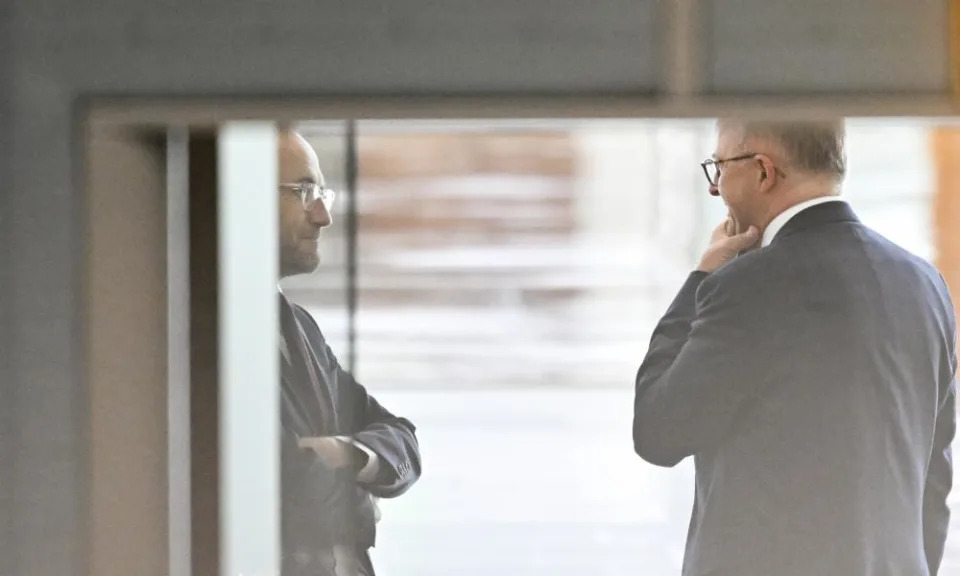
Photograph: Lukas Coch/AAP
The long-running fractures that define Australian climate politics can do weird things to people who have been involved in it too long.
One observer with more experience than most had a moment of reverie this week, joking about a fantasy universe in which Labor, the Coalition and the Greens all made substantial compromises to transform the landscape, literally and figuratively.
In his dream world, new fossil fuel developments were immediately banned, nuclear energy was legalised and supported, and the safeguard mechanism revamped with tri-partisan support. Everyone got what they wanted at the price of something they didn’t. Gigantic likenesses of the parties’ three celebrated Bobs – Hawke, Menzies and Brown – were carved side-by-side into a mountain to celebrate the shock outbreak of political harmony.
Back here in the real world, there is no Three Bob Mountain, divisions are deep and compromise, when it happens, is painstaking.
Related: Safeguard mechanism: what is it, will it cut emissions and what role do carbon offsets play?
The safeguard mechanism – a failed Coalition policy that the Albanese government has promised to reboot into something meaningful – is being asked to carry the weight of Australia’s long-running failure to introduce meaningful and durable policies to cut greenhouse gas emissions.
That’s a problem, because the safeguard is highly complicated and has design issues that could stop it driving deep and genuine emissions cuts.
With the Coalition having opted out of an adult discussion about how industrial polluters should respond to the climate crisis, tough decisions lie ahead for Labor, the Greens and independents on what they are each willing to accept, and whether they will draw red lines that could lead to them walking away with nothing.
What is the safeguard mechanism?
The safeguard mechanism was introduced by the Coalition in 2016. It was promised to put a limit on greenhouse gas emissions from about 200 major industrial facilities.
It applies to facilities that emit more than 100,000 tonnes of carbon dioxide equivalent a year. Each facility is set an emissions limit, known as a baseline.
The Coalition said companies that emitted above their baseline would have to buy carbon offsets or pay a penalty. In practice, facilities were allowed to change their baselines, few were penalised and industrial emissions continued to increase.
Labor plans to revamp the scheme.
It would set new baselines based on emissions intensity - how much a facility releases per unit of production. Baselines will be reduced by 4.9% a year.
Companies could choose whether to make onsite emissions cuts or buy Australian carbon credit units.
New polluting facilities, including gas and coal mines, could open and would be set baselines at “international best practice”.
Companies that emit less pollution than their baseline allows would be awarded a new type of “safeguard credit”. These within-scheme credits could be sold to other polluting facilities that emit more than their baseline and need offsets.
Labor wants the changes to start on 1 July 2023.
The point of this piece is not to say where those red lines should be drawn, or to predict what will happen. But it is worth considering what a deal might involve if one is reached.
The Greens’ leader, Adam Bandt, has offered to set aside other concerns about the safeguard if the government agrees to not approve any more new coal and gas mines. The minor party had been expected to present a more technical pitch, but instead kept its message simple: how about we just stop the expansion of the thing that causes the climate crisis?
There was an element of cheek in this. Bandt knew the government would not agree. The prime minister said so before the election and several times since. Asked on Sky News last week if she would say yes to some coal and gas developments, the environment minister, Tanya Plibersek, replied: “Yeah, of course.” The next day her department approved a 116-well expansion of a Santos coal seam gas development in Queensland’s Surat Basin.
Related: Australia can’t blow another decade of climate action – it’s now up to Labor and the Greens | Katharine Murphy
They have copped a wave of criticism, but there is evidence the Greens’ campaign to try to make all climate debates about new coal and gas developments is not only evidence-based, it has been tactically smart. It avoids a fight over putting people out of work – projects that haven’t begun don’t employ people – and the focus has thrust the issue of new fossil fuels – and their vast uncounted emissions when Australian coal and gas is burned overseas – to the centre of political debate. It points to where the climate battleground will be at the next federal election.
But a deal that blocks new coal and gas is not going to happen, whatever its merits. So what could be agreed?
One option could be a short-term pause on approving new developments until changes to national environmental law – the Environment Protection and Biodiversity Conservation (EPBC) Act – are dealt with over the next year.
This would sharpen the focus on whether the reformed EPBC Act should finally, belatedly, include a “climate trigger” – a requirement that CO2 emissions are considered when developments are assessed. It could be done in a number of ways, from requiring that the impact of big polluting projects be considered, to an outright ban on developments that emit above a certain level.
Senior figures from both major parties have supported a climate trigger in the past. They include Anthony Albanese, who unsuccessfully introduced a climate trigger bill while opposition environment spokesman in 2005. Labor would not be breaking a pledge if it supported one now – it made no promise either way before the election.
Related: Fossil fuel companies won’t save us from climate change. We need governments to step up | Adam Morton
A second option is a concerted crackdown on fossil methane emissions, which are released during gas and coal extraction. Methane is a short-lived but highly potent greenhouse gas, responsible for about a third of global heating. Satellite evidence suggests Australian mines may leak substantially more of it than federal government accounts suggest. Technology is available that can significantly reduce it.
A more radical but admittedly less likely possibility could be to redesign the policy so that fossil fuels are treated differently to other industries under the safeguard, such as steelmaking, aluminium smelting and cement production, which all parties agree should have a future and will need help to clean up. There is a good case the two groups should not be shoehorned into the same scheme, given their vastly different future trajectories.
There is also the contentious issue of carbon offsets, which allow companies to pay for forest regeneration and other projects rather than cut their direct emissions.
Carbon offsets are used by the government and polluting companies as an alternative to cutting carbon dioxide emissions.
Instead of reducing their own pollution, they can choose to buy offsets - known as Australian carbon credit units (ACCUs) - that are meant to represent a reduction in emissions elsewhere.
Each carbon credit represents one tonne of carbon dioxide that has either been stopped from going in the atmosphere, or sucked out of it.
Methods approved to generate carbon credits in Australia include regenerating native forest that has been cleared, protecting a forest that would otherwise have been cleared (known as “avoided deforestation”) and capturing and using emissions that leak from landfill sites to generate electricity.
Credits were bought by the government through the $4.5bn taxpayer-funded emissions reduction scheme or, increasingly, by polluters on the private market.
Credible criticisms of the integrity of the offset scheme have not been thoroughly addressed. The climate change minister, Chris Bowen, says he is confident there will be substantial cuts onsite at polluting facilities, but has also proposed allowing companies to buy an unlimited number of offsets. Independent senator David Pocock has flagged he wants some checks introduced and the Greens have also raised concerns.
None of these paths would address all concerns raised about the safeguard mechanism. Some of them are probably as likely as Three Bob Mountain suddenly appearing on the horizon.
But they are potential starting points, which is where we are at.
UK
Scrapping EU laws will undermine Parliament, say legal analysts
Danny Halpin, PA Environment Correspondent
Wed, 22 February 2023 at 5:01 pm GMT-7·3-min read
The Government’s controversial plan to scrap EU laws by the end of the year undermines parliamentary sovereignty, according to legal analysts.
If passed, the Retained EU Law (Revocation and Reform) Bill would see around 4,000 laws reviewed and left to expire unless their retention is approved by ministers.
Critics of the Bill, which is to go before the House of Lords on Thursday, say it is undemocratic and gives too much power to ministers.
Environmental groups in particular are worried it will remove key protections for nature and food safety.
The National Farmers’ Union (NFU) said on Wednesday that its members support reviewing EU laws but do not want to see the process rushed through in less than a year.
A Government spokesperson said the Bill will remove “burdensome” EU law and will not compromise environmental standards.
In a new legal analysis commissioned by ClientEarth, the RSPB and WWF-UK, lawyers Sir Jeffrey Jowell KC and Jack Williams dismissed claims that the Bill would promote parliamentary supremacy as “blatantly hollow”.
They said the Bill would undermine Parliament’s sovereignty by transferring its law-making powers to individual ministers and this would be “virtually free” from scrutiny by the electorate and other members of Parliament.
In its current form, they said, the Bill would threaten the UK’s international obligations on environmental standards and violate the rule of law by making it “impossible” to predict which laws would be kept or removed.
ClientEarth lawyer Angus Eames said: “The threat the Retained EU Law Bill poses cannot be overstated. If passed, it could maim efforts to address the climate and biodiversity crises, put the health of millions at risk and subvert the function of the UK’s political system.
“Decisions on the health of our environment, the safety of our food and our longstanding protections as consumers cannot be left in the hands of current and future ministers without the input and oversight of Parliament – and this legal analysis makes that painfully clear.
“This Bill would fundamentally undermine how democracy functions in the UK – which is why we are calling for the Bill to be dropped entirely.”
Farming minister Mark Spencer said at the NFU conference on Tuesday that no important environmental laws will be allowed to inadvertently expire and claimed civil servants will review every piece of legislation.

Farming minister Mark Spencer said EU laws will go into three ‘buckets’ – scrap, keep or improve (Jonathan Brady/PA)
The Government spokesperson said: “The Retained EU Law Bill will enable us to amend or remove burdensome retained EU law and ensure we can create the best regulatory environment in the UK to drive economic growth, boost innovation and develop a competitive advantage in future technology.
“We are committed to working collaboratively with Parliament to deliver this programme of work. That’s why we have ensured this Bill contains robust scrutiny mechanisms that will enable the appropriate scrutiny of any amendments or repeals of retained EU law.
“Any reforms will not come at the expense of the UK’s already high environmental standards, and ministers have been clear that we will maintain our international obligations.”
Beccy Speight, chief executive of the RSPB, said: “In leaving the EU we were promised that we would now be free to replace continent-spanning legislation with laws and regulations that would recognise the specific needs of the UK.
“If done well this could be a real opportunity to tackle the nature and climate emergency and fulfil our international commitments to protecting and restoring nature.
“However, with at least 1,800 pieces of legislation relating to the environment alone, the scale of this task becomes apparent.
“We do not know what will replace the EU legislation, but if the Government remains committed to their 2023 deadline, there are clearly important questions to be asked about a path that can only be described as unconstitutional.”
Coffee harvest plunges amid Central American exodus
Noe Leiva with Alberto Pena in San Jose
Wed, 22 February 2023
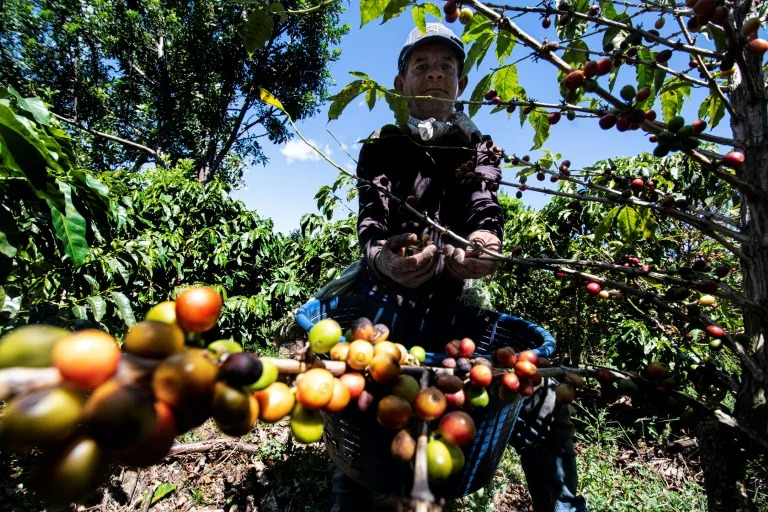
Nestled in the mountains of central Honduras, the "El Encanto" coffee farm is tackling this year's harvest with half the pickers it needs.
In Costa Rica's Central Valley, the "Hersaca Tres Marias" farm faces a similar dilemma. The seasonal laborers both rely on are among the thousands to have abandoned Central American shores in search of a better life elsewhere.
"Many of our coffee pickers now go to the United States, to other countries, for a lack of opportunities" at home, farmer Selvin Marquez, 34, told AFP in Siguatepeque, some 90 kilometers (56 miles) north of the Honduran capital Tegucigalpa.
Coffee growers like Marquez are at their wit's end, watching the fruit of their labors, and their incomes, shrivel up.
Marquez planted five hectares of coffee that now needs harvesting. But he has only 20 of the 40 pickers he needs.
One of them is Jose Samuel Hernandez, 34, in the fields with his wife Esly Mejia, 24, daughter Alexa, two, and sister-in-law Gleny, 20.
Every hand counts, and even Alexa helps pick some of the low-hanging fruit while playing with a dusty teddy bear.
The family cuts 182 kilograms (402 pounds) in eight hours and receives the equivalent of $0.10 per kilo.
An "insufficient" income, said Hernandez, whose basic monthly expenses are the equivalent of $567 a month.
But he has little choice. A security guard for the rest of the year, a job at which he earns $429 per month, he took the day off to join his family coffee picking.
Hernandez said many of his friends have left Honduras. He, too, has thought of packing up. "But what will happen to my family?"
- Fleeing poverty -
The authorities in Honduras estimate that 1,000 of its 9.5 million citizens leave every day with the hopes of making it to the United States for a chance at the "American dream."
They seek to escape rampant poverty and violence in one of the world's top ten coffee producing countries.
Some 250,000 hectares of coffee plantations are shared between more than 100,000 mainly small-scale producers.
The industry generates a million jobs and accounts for about 38 percent of Honduras' agricultural GDP, according to the Honduran Institute of Coffee.
In the 2021/22 season, the country exported coffee worth some $1.4 billion.
Costa Rica, too, is a major producer, and similarly affected by emigration. But here the problem is slightly different.
The comparatively stable country relies heavily on hired hands from neighboring Nicaragua for its coffee picking.
But since a clampdown on critics and the opposition following 2018 protests that were violently put down, more and more Nicaraguans are leaving for shores further afield.
Managua does not provide emigration data, but more than 164,000 Nicaraguans were intercepted at the US border in the 2022 fiscal year -- a three-fold increase in 12 months, according to American customs authorities.
- 'They have left' -
Nicolas Torres, 70, is one of the shrinking number of Nicaraguan laborers to have returned this year to the farm Hersaca Tres Marias in the region of Birri, some 37 kilometers north of the capital San Jose.
With his deeply tanned hands, he caresses the grains.
"I grew up in coffee," he told AFP, picking non-stop. "This is one of the good jobs I have always done."
Torres laments that in his own country, finding work is difficult and "a lot of pressure in the country... makes us emigrate."
Costa Rica boasts some 94,000 hectares of coffee plantations that employ about 25,000 pickers every season -- mostly Nicaraguans but also Panamanians and locals, according to Bilbia Gonzalez of the country's Coffee Institute.
The pickers earn about $0.15 per kilo.
Migrant workers from Nicaragua, a country of nearly seven million people, are "extremely important" for Costa Rica, which exported $337.8 million dollars in coffee in 2021/22, said Gonzalez.
Yet, "there are few Nicaraguans" to do the work, added Geovanny Montero, manager at Hersaca Tres Marias. "They have left for the United States."
Last year, the farm hosted 70 pickers, said Montero. This year, there are 50 -- a reduction he calculates will result in a five percent smaller harvest.
"That is a lot of money," Montero lamented as he pointed to fallen coffee fruit on the ground.
nl-apg/fj/mlr/st
Tunisia detains prominent dissidents amid growing crackdown
NEWS WIRES
Wed, 22 February 2023

© Imed Haddad, AFP
Tunisian police detained two prominent dissidents and surrounded the home of a third on Wednesday, part of an escalating crackdown on critics of President Kais Saied, who has labelled his opponents traitors and criminals.
The arrests, along with others this month, have targeted some of Saied's most important critics along with other politicians, judges and media figures.
Issam Chebbi, head of the Republican Party, was detained near a shopping centre while he was out with his wife, his family and lawyers told Reuters. Police later searched his home.
Chaima Issa, an activist who took part in the 2011 revolution, was detained after police surrounded her in her car, her lawyer Samir Dilou said.
Police also surrounded the house of Jawher Ben Mbarek to detain him, but the constitutional law professor was not there, his sister and lawyers said.
Speaking in a video published online on Wednesday, Saied attacked the National Salvation Front opposition coalition in which Ben Mbarek and Issa were leaders, along with Chebbi's brother.
He called it "a paid campaign", adding that "Tunisia wants to get rid of these criminals".
Saied shut down the elected parliament in 2021 and seized most powers, moving to rule by decree and writing a new constitution that he passed in a referendum with low turnout last year, actions his foes call a coup.
The president has said the moves were legal and necessary to save Tunisia from chaos, repeatedly calling his critics traitors and enemies of the state.
(REUTERS)
David Bowie’s unrealised dreams to finally see light of day as V&A acquires his archive
Anita Singh
Wed, 22 February 2023

The 'unprecedented' gift to the Victoria and Albert will give fans new insight into the life of David Bowie - Gijsbert Hanekroot/Redferns
The Victoria and Albert (V&A) has acquired the David Bowie archive in the largest donation of its kind in the museum’s history.
The “unprecedented” gift of 80,000 objects includes Bowie’s most famous stage outfits and the handwritten lyrics to songs such as Heroes and Ashes to Ashes.
But fans will also learn about unrealised projects that never saw the light of day, through the notebooks that Bowie filled with ideas.
They include a musical adaptation of George Orwell’s Nineteen Eighty-Four, which he had hoped to take to the West End but which failed to gain the approval of Orwell’s widow.
The archive features letters, sheet music, film, video, set designs, instruments, album artwork, awards and a huge collection of photographs.

The archive shows some of Bowie's most striking outfits - Michael Ochs Archives/Getty Images
There are “intimate” notebooks, 70,000 pictures and the synthesiser that Brian Eno used on Bowie albums, as well as the Stylophone that was a present from Marc Bolan and was used in the recording of Space Oddity.
Costumes include the Ziggy Stardust ensembles designed by Freddie Burretti, as well as Kansai Yamamoto’s flamboyant creations for the 1973 Aladdin Sane tour.

David Bowie wearing the bodysuit designed by Kansai Yamamoto for the 1973 Aladdin Sane tour - Sukita and The David Bowie Archive/PA
A photo collage of film stills from The Man Who Fell To Earth will go on display, as will examples of the “cut up” writing introduced to Bowie by William Burroughs.
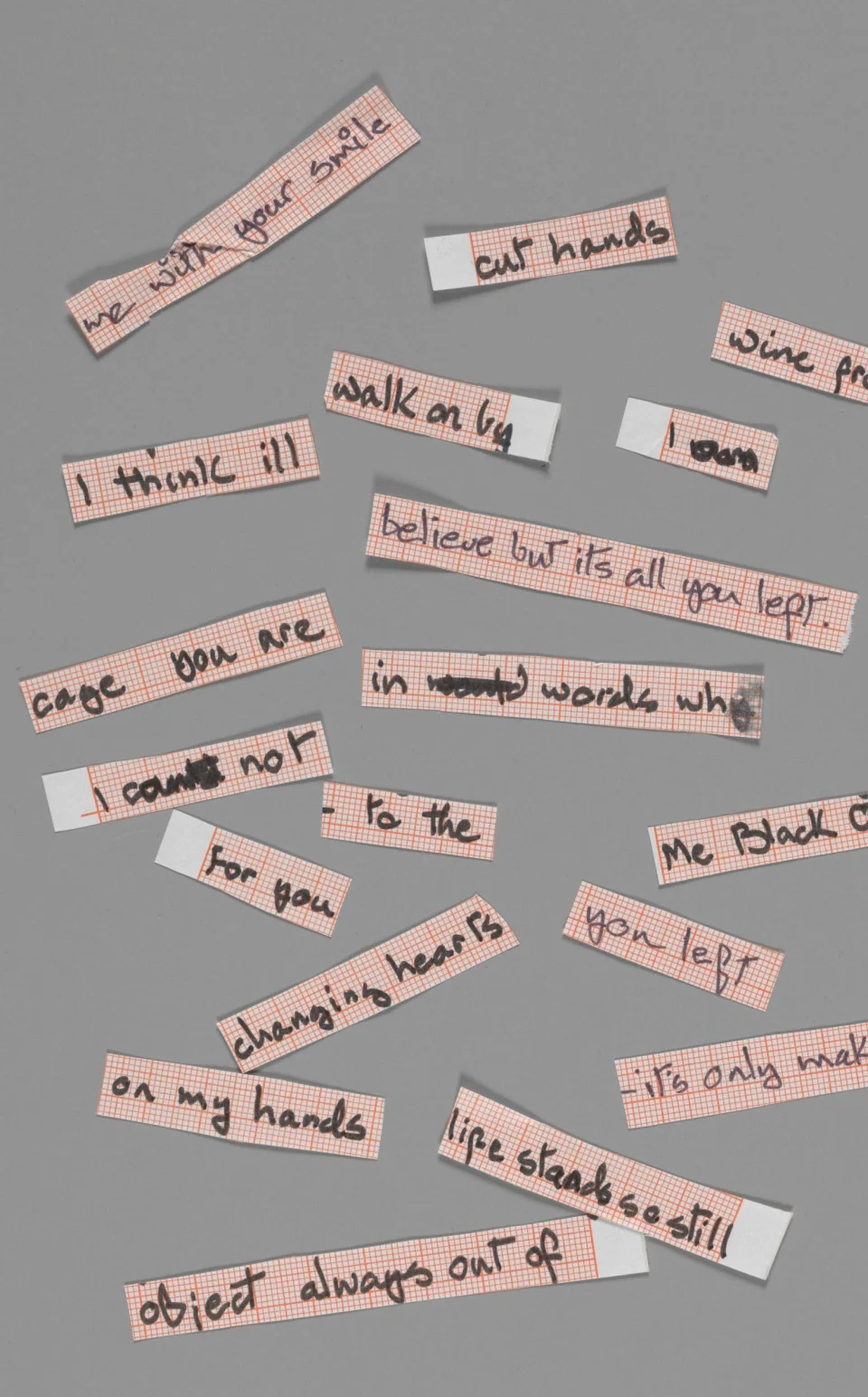
Bowie used a 'cut up' style of writing to produce his work - The David Bowie Archive
Bowie meticulously catalogued his own work and housed the collection in a storage facility in New Jersey.
Some of it appeared in a record-breaking V&A exhibition, which opened in 2013 and was seen by two million people around the world.
“He kept absolutely everything,” said a friend of the star, who died in 2016. “Every outfit from Top of the Pops, detailed notes of every project. The exhibition only scratched the surface.”

A self-portrait of Bowie that will feature in the forthcoming display - The David Bowie Archive
The archive will be housed at the new V&A site at East London’s Olympic Park, in The David Bowie Centre for the Study of Performing Arts.
The £10 million centre is being funded by Warner Music Group and the foundation of Sir Leonard Blavatnik, the Ukrainian-born billionaire and arts philanthropist.
It is the largest gift ever made by a performer to the V&A. Tristram Hunt, the museum’s director, said it would provide “a new sourcebook for the Bowies of tomorrow”.
Kate Bailey, the V&A’s senior curator of theatre and performance, said of the archive: “The scale and breadth is unprecedented.
“It is absolutely remarkable. Not only was Bowie making amazing music and touring the world, he managed to meticulously preserve and curate the important parts of his creative journey. From the 1960s, he was keeping things.
“There are notebooks and scripts, ideas and notations. They are intimate in the creative sense. Bowie’s life was art, and you definitely get that sense.”
Bowie’s death followed an “18-month battle with cancer” which he fought privately, keeping the news from all but the closest family and friends.
His estate was divided between his widow, Iman, and his children, Duncan and Lexi Jones. The executor of his will is Bill Zysblat, Bowie’s long-time business manager.
The estate sold Bowie’s publishing catalogue to Warner Chappell Music last year for a reported $250 million (£206.5 million).

Thousands of photographs are also part of the collection - John Robert Rowlands
A spokesman for the estate said: “With David’s life’s work becoming a part of the UK’s national collections, he takes his rightful place amongst many other cultural icons and artistic geniuses.
“We’re so pleased to be working closely with the V&A to continue to commemorate David’s enduring cultural influence.”
The collection is so vast that it will take two years to catalogue, with the centre scheduled to open its doors in 2025.
Bowie’s plans for the George Orwell musical have intrigued fans for decades.
He told one biographer: “My office approached Mrs Orwell because I said: ‘Office, I want to do Nineteen Eighty-Four as a musical, go get me the rights.’
“And they duly trooped off to see Mrs Orwell, who in so many words said: ‘You’ve got to be out of your gourd. Do you think I’m turning this over to that as a musical?’ So they came back and said: ‘Sorry, David, you can’t write it.’”
Bowie had already started work on the songs, some of which ended up in a modified form on the 1974 Diamond Dogs album.
NAIVE YOUNG WOMAN
Georgia grand jury foreperson set off a firestorm with her ‘media circus’. But will the comments tarnish the case?
SHE CLAIMED NEVER VOTED AND KNEW NONE OF THE ACTORS IN THE CASE. SHE WAS STAR STRUCK MEETING RUDI GUILLIANI
John Bowden
Wed, 22 February 2023 \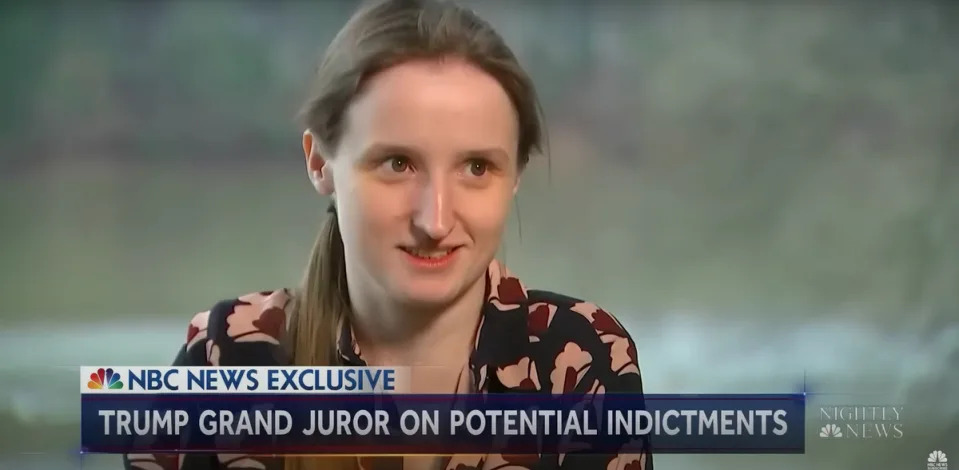
Emily Kohrs (NBC News)
Emily Kohrs raised more than a few eyebrows with a surprise media tour in the wake of her service on Fulton County’s grand jury investigating Donald Trump’s election interference in the state.
Ms Kohrs found herself the subject of surprising criticism this week after she gave a series of interviews to journalists at major media outlets around the country, all regarding her service as foreperson on the grand jury hearing evidence in the case of Mr Trump’s effort to overturn his 2020 defeat in Georgia.
Some of her comments in particular described the grand jury’s deliberations, including whether they found some witnesses who appeared before them to be credible. She also explained the grand jury’s decision not to seek testimony from Mr Trump himself, though she was careful to not address any direct prompts to name witnesses or targets of the probe who were recommended for criminal charges. She did, however, laugh when asked about Mr Trump’s comments that the grand jury “exonerated” him.
Much of the most vocal criticism came from two figures on CNN, Anderson Cooper and legal analyst Elie Honig, who trashed the 30-year-old for her remarks to one of their colleagues just hours after the interview took place.
“This is a horrible idea,” said Mr Honig of her multiple interviews. “And I guarantee you that prosecutors are wincing, watching her go on this.”
Mr Honig went on to accuse Ms Kohrs of not taking the process seriously. Cooper chimed in, adding: “There’s no reason for her to be out talking.”
“No. It’s a prosecutor’s nightmare. Mark my words, Donald Trump’s team is going to make a motion if there’s an indictment to dismiss that indictment based on grand jury impropriety,” Mr Honig concluded.
And the former president was quick to weigh in too, deriding Ms Kohrs’s speaking style as “energetic” and referring to the grand jury as a “Kangaroo Court” (despite it not being a trial).
“This Georgia case is ridiculous, a strictly political continuation of the greatest Witch Hunt of all time. Now you have an extremely energetic young woman, the (get this!) “foreperson” of the Racist D.A.’s Special Grand Jury, going around and doing a Media Tour revealing, incredibly, the Grand Jury’s inner workings & thoughts. This is not JUSTICE, this is an illegal Kangaroo Court,” he insisted.
But in conversations with The Independent on Wednesday, two experts with litigation experience, including criminal prosecution, said that these fears were overblown.
Steve Plafker, a retired deputy district attorney for the county of Los Angeles, said that Ms Kohrs’ remarks would be a “drop in the bucket” compared to the entirety of the public speculation that has taken place around this case, and noted that her remarks did not even occur as a trial was underway. Finding jurors who were unfamiliar with her remarks would merely be part of the jury selection process should that would take place, he asserted.
“In light of the publicity Mr Trump, or any politician for that matter, attracts generally, this woman's statements are a drop in the bucket, actually the ocean,” Mr Plafker explained. “I do not see any chance of prejudice arising from them.”
He added that there was little chance of Mr Honig’s fears of Mr Trump’s attorneys filing successfully for potential charges to be dismissed.
“Even if I am wrong, there is no chance of their leading to a mistrial. Any danger of prejudice resulting from pre-trial publicity is handled at the time of jury selection. Mistrials result from problems arising during trial,” Mr Plafker went on. “If this woman had been exercising good judgment, she would have gone home and kept her mouth shut, but I doubt that anything she said would make a prosecutor's job any more difficult than it already is.”
Norm Eisen, who served as a litigator for the high-powered DC law firm Zuckerman Spaeder LLP – as well as White House special counsel – concurred. The only real danger arising from Ms Kohrs’s comments, he asserted, could come in the form of an opportunity for Mr Trump’s team to file pointless motions as a delay tactic.
“There’s now a media circus around Ms Kohrs’ comments,” Mr Eisen explained. “I think it’d be better for her on the whole to be a little more restrained. Her media tour is a bit of a distraction from the underlying substantive questions of guilt or innocence. Moreover, it creates an opportunity for a prospective efendant known for filing frivolous legal motions to make more.“
But, he added: “Donald Trump may very well attempt to file some kind of a motion about the foreperson’s statements. But legally, they’re not significant.”
“As the judge noted at the hearing, grand jurors do have some secrecy leeway under Georgia law and practice,” he said. “Ms Kohrs has been very openly trying to operate within the parameters that the judge apparently gave on what is and is not allowed, and so far I don’t think she’s exceeded them.”
A decision by Fulton County’s district attorney, Fani Willis, is expected imminently in the case against Mr Trump and his legal team. A partial release of the grand jury’s final report indicated that at least some of the recommended indictments stem from instances in which the grand jury’s members believed that one or more witnesses were untruthful in their testimony; Donald Trump did not testify.
Nasa’s James Webb Space Telescope finds set of huge galaxies that ‘shouldn’t exist’
Andrew Griffin
Wed, 22 February 2023

Nasa’s James Webb Space Telescope has found a set of massive galaxies that should not exist.
The equipment was used to observe a set of massive galaxies that formed around 500-700 million years after the Big Bang, when the universe was only 3 per cent of its current age. Those galaxies have stellar masses as high as ten billion times that of our Sun, and one that could be as massive as 100 billion of our Sun.
In all, scientists found six galaxies, which together threaten to change what scientists know about the beginnings of galaxies in our universe. Researchers say they refer to the objects as “universe breakers” and that they are in tension with 99 per cent of existing models of the universe.

The six galaxy candidates that could change our understanding of the cosmos (NASA)
Such galaxies should not be expected to be so big so soon after the beginnings of the universe, the researchers say. The mass of the stars examined in the new research are as much as 100 times greater than researchers had previously thought.
“These objects are way more massive​ than anyone expected,” said Joel Leja, assistant professor of astronomy and astrophysics at Penn State, who modeled light from the galaxies, in a statement.
“We expected only to find tiny, young, baby galaxies at this point in time, but we’ve discovered galaxies as mature as our own in what was previously understood to be the dawn of the universe.”
If they can be confirmed, they suggest that our history of the early cosmos may be wrong, and that galaxies grew far more quickly than we realised. That would require changing either our models of the universe or our understanding of how galaxies began.
“We looked into the very early universe for the first time and had no idea what we were going to find,” Leja said. “It turns out we found something so unexpected it actually creates problems for science. It calls the whole picture of early galaxy formation into question.”
But scientists caution that the distance and age of the galaxies mean that they cannot be absolutely sure what they are. Some might turn out to be supermassive black holes, researchers say – but with six candidates, a number of them are likely to really be galaxies, as suspected.
“If even one of these galaxies is real, it will push against the limits of our understanding of cosmology,” said Erica Nelson, co-author of the new research and assistant professor of astrophysics at the University of Colorado Boulder.
And even other objects would still be shocking, researchers say. “Another possibility is that these things are a different kind of weird object, such as faint quasars, which would be just as interesting,” said Professor Nelson.
The findings could be confirmed by taking spectrum images of the galaxies, which would better confirm how far away they are and what they are made up of. That in turn would let scientist understand what they might look like and how big they are.
The new study, ‘A population of red candidate massive galaxies ~600 Myr after the Big Bang’, is published in Nature today.
AUSTRALIA
How the NSW government can still benefit from developer money despite political donations ban
Anne DaviesGUARDIAN AUSTRALIA
Wed, 22 February 2023
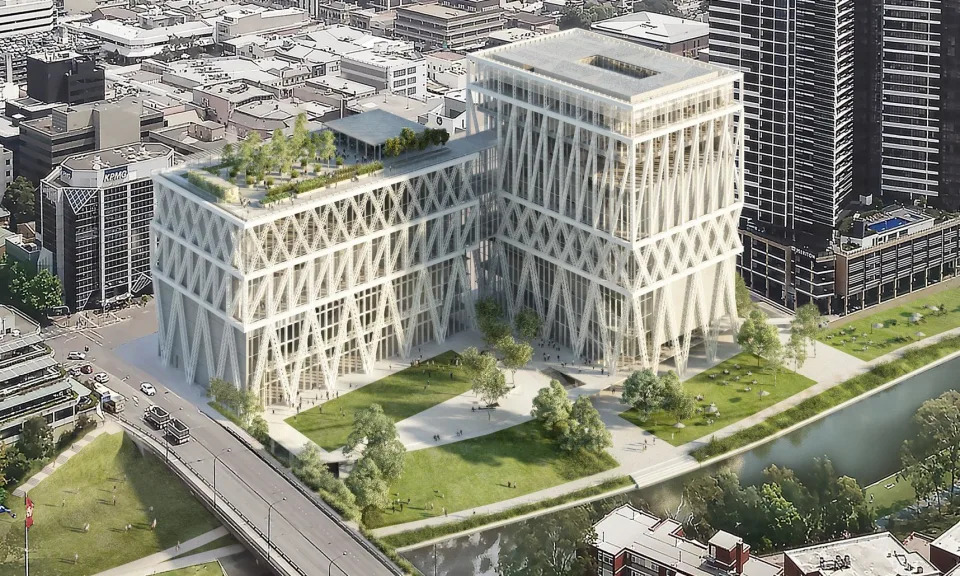
The New South Wales government is indirectly benefiting from donations from property developers who are legally able to give huge sums to fund prestige projects in the state, despite there being a ban on financial contributions to political parties.
One of the state’s biggest developers, Lang Walker, and his charity the Walker Family Foundation are now a major patron of the Powerhouse Museum, Campbelltown hospital and even the bicentennial of the NSW parliament, which will be celebrated in 2024.
It comes as Walker’s development company, Walker Corp, seeks to get 1,284 hectares of land rezoned for 12,900 houses at Appin on Sydney’s south-west fringe.
The Walker Family Foundation is a separate charitable entity and there is no suggestion its support for the projects is linked in any way to the Appin development.
Property developers making large philanthropic donations to government projects is entirely legal and arguably desirable when the public benefit. But experts point out that it can raise questions about the potential for (or perception of) undue influence in the state government’s dealings with that developer.
Related: Sydney’s growing pains: land rezoning a potential billion-dollar deal for developers after local council sidelined
Until last year Appin had been designated as suitable for housing “in the long term”, and the Department of Planning had said it was not needed until 2036.
But in November the planning minister, Anthony Roberts, announced that the NSW government was fast-tracking rezoning approval of Appin and that the state would take over assessment of the proposal from Wollondilly council.
Roberts and the NSW premier, Dominic Perrottet, said the fast-tracking, which the department said was part of a pilot scheme, was designed to help drive down real estate prices in Sydney by increasing supply of housing sites.
The relationship of state governments to developers has long been a source of sensitivity because of their role in planning and approving developments.
The former NSW Labor government was mired in multiple scandals about the potential (or perceived potential) influence that political donations by developers might have had on decisions.
Related: Ten donors gave 77% of total political donations in lead-up to last Australian election
NSW Labor was a huge beneficiary while in power. For example, companies in the Walker Corp group alone were able to legally donate more than $1.2m to the party over eight years before the ban. Other developers, including Payce Consolidated and Meriton, were also regular donors to both the state Labor and Liberal parties. Payce donated $106,000, while Meriton contributed nearly $600,000 to the state parties’ coffers.
The growing concerns about some Labor MPs’ relationships with developers and the potential for undue influence this might have over planning led to a total ban on developer donations to political parties in 2010.
But the NSW government accepts monetary support, albeit indirectly, from developers in other entirely legal ways.
After the NSW ban, Walker Corp continued its support of the federal Liberal party, donating more than $700,000 over the last decade to federal campaigns. There is no restriction on federal donations from developers, which can be made via state offices, provided they are deposited into the federal campaign account and used to fund federal activities.
More recently, some of the Walker Family Foundation’s philanthropy has been directed towards projects in NSW that would appear to have indirectly assisted the state government, while complying with the state’s ban on developer donations.
Powerhouse lifeline
By 2021 it was apparent that one of the NSW government’s marquee projects, the Powerhouse Parramatta Museum, was running over budget and would cost more than $500m to build. The Powerhouse announced it would seek $75m in private support.
In October that year Walker, through his family foundation, threw a $20m lifeline to the project.
In 2019 Walker gave $20m to fund a building named after him at Campbelltown hospital, which will be home to the Ingham Institute for Applied Medical Research.
The Ingham family, of chicken fame, are also a major developer in western Sydney and set up the institute a decade ago. It has attracted support from other developers including the Perich and Vitocco families.
Related: Can you predict which parts of Sydney will be next to gentrify?
Walker has said his family has a history of investing in medical research, including at the Chris O’Brien Lifehouse and St Vincent’s hospital in inner Sydney.
He told the Australian Financial Review: “We’ve got a lot of land in the Macarthur region. We want to give back to the universities, the medical side of things and sport.”
The Walker Family Foundation’s support for the Powerhouse will establish the Lang Walker Family Academy, including four state-of-the-art education facilities, plus dorm rooms for students and teachers to stay at the museum.
It would inspire and educate students in western Sydney and beyond, Walker said at the time.
Rezoning decision
When Roberts became the minister for planning for the second time in December 2021, one of the first meetings he had was with Walker Corp, according to his official diary disclosures. The meeting is listed as “introductory” and it is not known which executives attended or what was discussed.
On 2 November last year Roberts announced that the NSW government would fast-track Walker’s Appin site and Ingham’s nearby North Appin site for residential rezoning, despite earlier assessments by the Department of Planning that these areas were not required for housing until 2036.
In response to questions from Guardian Australia, the NSW planning department said no lobbying by any developer had affected decision making.Interactive
Asked what had changed to bring forward the need for development at Appin, the department pointed to future housing projections and specifically a future housing supply analysis for western Sydney in 2021. The study said there wasn’t enough rezoned land in the pipeline to meet housing demand, with a projected shortfall of 67,000 homes by 2036 and 118,000 homes by 2041.
The department said the analysis had been undertaken by the consultants Atlas Urban Economics for Walker Corp at the request of a panel set up to work through some of the technical and strategic difficulties associated with the sites.
The department also pointed to its technical assurance panel which over the last year has worked with agencies to overcome obstacles to development of Appin.
University endowment
Walker has also supported Western Sydney University. He provided an endowment for a chair of urban transformation in the school of engineering and design at Western Sydney University and is the major developer of WSU’s Bankstown campus.
Last year he was named as one of eight ambassadors for the bicentennial of the NSW parliament. He is just one of two private sector supporters, the other being Westpac, whose chairman (of the Bank of NSW, as it was then) was a member of the first Legislative Council.
Related: Soaring property prices in Australia’s most sought-after regional areas come tumbling down
The president of the Legislative Council, Matthew Mason Cox, said the ambassadors had offered support for programs such as mentoring young leaders. He said Walker had offered his support because he was interested in the history of the parliament. He could not say what the support would be worth but said the bicentennial was largely funded by a $25m allocation in the state budget.
Walker was the first, along with Western Sydney University, to support the Powerhouse but other developers have followed his example of generosity.
The Vitocco family, which has land in the other major development area, the Aerotropolis near the new airport, has given a $5m donation.
Last April Holdmark Properties, which has residential developments in Parramatta, St Leonards and Lane Cove, made a $10m donation to establish an architectural and engineering exhibition and the Holdmark Gallery at the Powerhouse.
Its founder and chief executive, Sarkis Nassif, said his donation was motivated by a desire to give back to the city that, as he described, has “given so much to me”. Powerhouse Parramatta is Nassif’s first philanthropic gesture in the arts sector.
‘Why are they doing this?’
Analysis by the Centre for Public Integrity has found that property developers donated $5.7m in 2019 to federal politics and their donations are increasing, with the federal Liberal party being the biggest beneficiary.
“Property developers are the second-largest donating industry behind resources,” said Geoffrey Watson SC, a barrister and director of the Centre for Public Integrity.
“Obviously there is a conflict created by the intersection of politics and development. The high court pointed this out in the McCloy case, and the potential for conflict of interest is not just apparent; it has shown to be real.”
Related: Powerhouse Parramatta: entertainment centre ‘masquerading’ as a museum has high flood risk, inquiry finds
The former lord mayor of Newcastle Jeff McCloy challenged the constitutional validity of the NSW developer donations laws in the high court after he was caught giving bags of cash to state Liberal MPs in the back of his Bentley, in breach of the ban. The high court upheld the laws.
Watson said charitable donations also had the potential to create ambiguous perceptions. “Although there is now no more direct influence through political donations [in NSW], there can still be influence which can be wielded covertly through other means.
“It can also come through charitable donations that are made to causes close to the hearts of politicians. Can you control this? It’s not easy and you don’t want to dissuade wealthy people from funding worthwhile projects. It requires more careful consideration.
“The question that needs to be answered is: why are they doing this?”
Icac advice sought
When the Coalition came to power in NSW in 2013 it pledged to clean up Labor’s planning regime, which had allowed the state planning minister to “call in” particular developments and become the decision maker.
In its 2010 report on the dangers of political donations the Independent Commission Against Corruption said: “The existence of a wide discretion to approve projects that are contrary to local plans and do not necessarily conform to state strategic plans has the potential to deliver sizeable windfall gains to particular applicants. This creates a corruption risk and a community perception of a lack of appropriate boundaries.”
Under the planning ministers Brad Hazzard and Rob Stokes, the NSW government moved to distance itself from planning decisions and instead established independent planning commissions and panels to make assessments and publish the reasons for those assessments.
The latest fast-tracking mechanisms, introduced under Roberts, bring assessment of major projects and decision making back to the planning department and the minister.
A spokesperson for Roberts told Guardian Australia: “Decisions with respect to planning are made on the basis of expert advice provided by the Department of Planning and Environment. No individual or corporation has the ability to impact the decision making outside formal processes employed by the department.
The spokesperson also said the nominating process for Appin and the other projects had been designed “in lockstep” with independent probity advisers and was being carried out in accordance with strict probity provisions.
“The Department proactively sought advice from the NSW Independent Commission Against Corruption to ensure the process safeguards against corruption risks.”



















